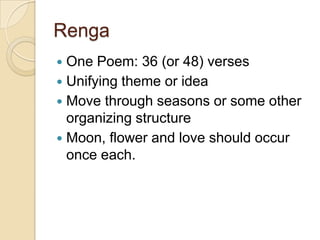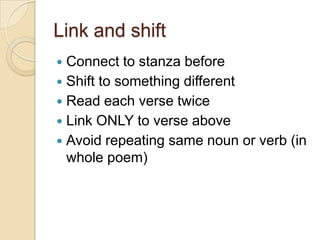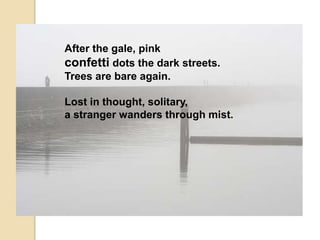Renga
- 1. Renga ď‚— One Poem: 36 (or 48) verses ď‚— Unifying theme or idea ď‚— Move through seasons or some other organizing structure ď‚— Moon, flower and love should occur once each.
- 2. Haiku ď‚— 5 syllables ď‚— 7 syllables ď‚— 5 syllables
- 3. Renga ď‚— Alternating haiku and couplets ď‚— Couplet: two lines, 7 syllables each
- 4. Link and shift ď‚— Connect to stanza before ď‚— Shift to something different ď‚— Read each verse twice ď‚— Link ONLY to verse above ď‚— Avoid repeating same noun or verb (in whole poem)
- 5. Haiku After the gale, pink confetti dots the dark streets. Trees are bare again.
- 6. After the gale, pink confetti dots the dark streets. Trees are bare again. Lost in thought, solitary, a stranger wanders through mist.
- 7. Lost in thought, solitary, a stranger wanders through mist. Worm turns the earth and dusting of frost shines. The grave moon greets the morning.
- 8. Process  Groups of 3 or 4  Groups of 3: 36 verses  Groups of 4: 48 verses  Today: plan, decide on your “hokku” (starting poem), scheme (seasons, elements, other progression), theme or general topic  Next class: write or finish writing  Next Wednesday: peer edit (share with non-group members)








